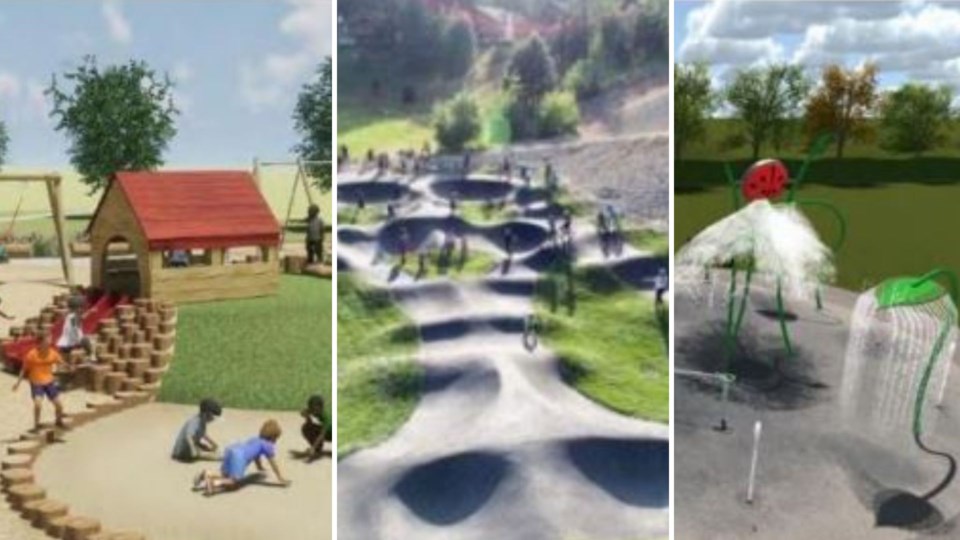Prince George City Council has decided to defer making a decision on the future of the proposed Mega Park project following a life cycle analysis of the project which found the park would cost the city $68 million over a 50-year period.
That works out to be $1.36 million annually required to operate and maintain the park while saving up for the eventual replacement of assets.
Council ultimately approved a motion to defer its decision on the future of the park until the second quarter of next year once the 2023 budgetary process has been completed.
The proposed Mega Park is a project spearheaded by Prince George Community Foundation, Rotary Club of Prince George and Colliers Project Leaders.
The vision is for a multi-use park that would include a pump track, junior and youth adventure park, spray park and senior-friendly outdoor fitness stations.
The proponents first brought forth the idea to city council on March 14 and then on July 25 council received a report with the results of community consultation held to gauge the public interest for a Mega Park at the corner of Ospika Boulevard and 22nd avenue.
Council then directed staff to fully investigate the financial implications of the proposed park to facilitate an informed and responsible review of the project.
The lifecycle cost analysis report now details the costs associated with six major park features and several other park amenities over the 50-year time period.
The six major park features include Junior Adventure Park, Youth Adventure Park, Spray Park, Accessible Playground, Pump Track, and Senior Friendly Outdoor Fitness Station.
The other park amenities include features such as a washroom with a changeroom, picnic shelter and tables, trees, benches, turf, and irrigation.
The report indicates the total cost of ownership for the proposed Mega Park over a 50-year time period is over $68M which includes a total of $22.6M of operating and maintenance costs and $41.6M in capital renewals over that same 50 years.
City council had to decide whether to request additional information regarding the park project, whether it should suspend further action by the administration regarding the Mega Park, or to proceed with the project by formalizing an agreement with the Community Foundation and Rotary Club.
“This Mega Park was happening before many of us joined this council,” said Mayor Simon Yu.
“We are in the process of doing the budget and many of us are new to council and this is the first time we have looked at this in great detail.”
Coun. Brian Skakun agreed that it would be best to suspend further action until at least early February.
“The scope of the project is too big for me right now and we have budget coming up with a number of challenges, and the operational costs are over $1 million per year, and I don’t know where that is going to come from.”
Coun. Tim Bennett also clarified that the $1.36 million in operating costs would equate to slightly over 1 per cent of the tax levy.
“It’s great to hear the ideas coming out but this sober second thought is what we need to consider,” said Coun. Garth Frizzell.
Coun. Kyle Sampson said he did not want to stifle the enthusiasm from the community or from the generosity of the folks rallying behind the project but also did not want to give an undue commitment to the project.
“So, keep the enthusiasm up and optimism but this is a new council and we need to make sure we have our strategic priorities in line and that we have a plan on how we are going to address significant capital investment going forward.”
The life cycle analysis did not include costs associated with the site preparation works such as geotechnical and environmental investigation or service connections that will be required for the park.
These costs would be evaluated following the completion of the park design.
The potential economic impacts the park would have on the community were also not considered as the report was based strictly on the life cycle costs of the park features and on the operation, maintenance, and eventual renewal of the park’s infrastructure.


